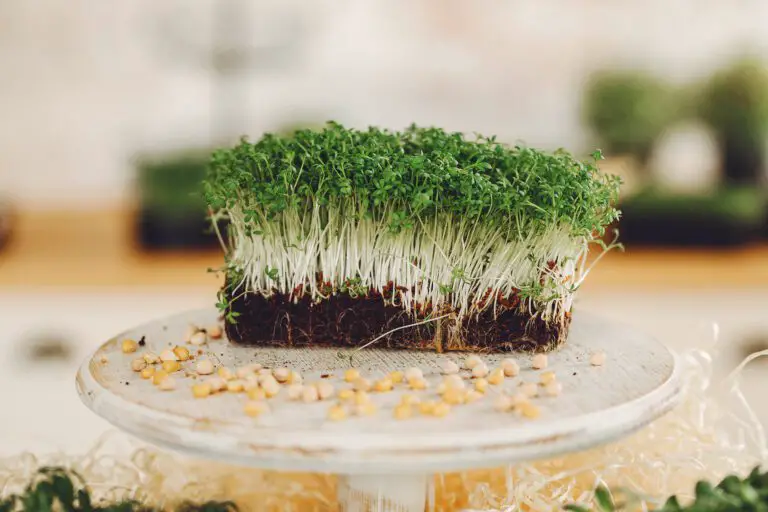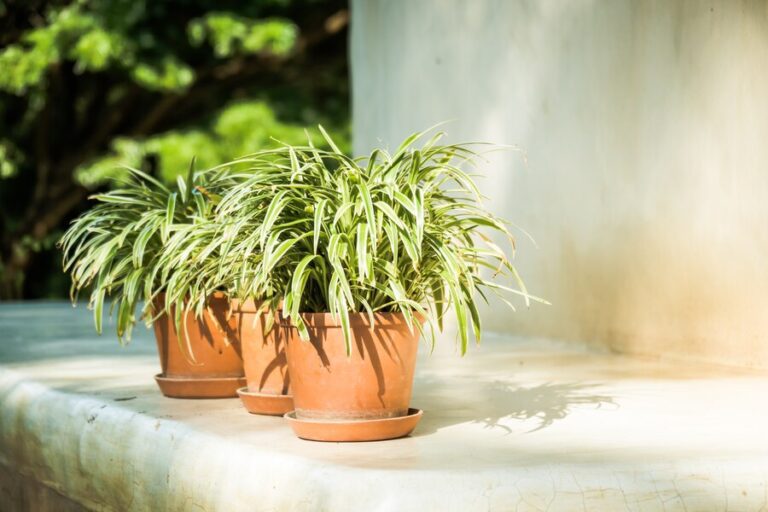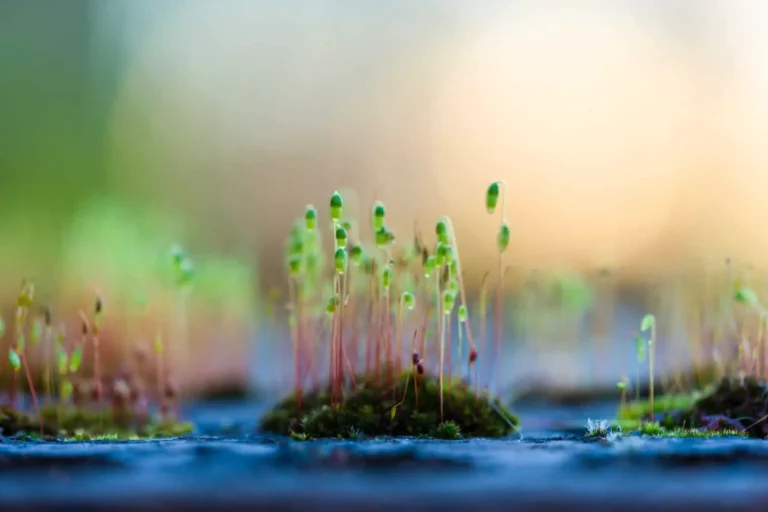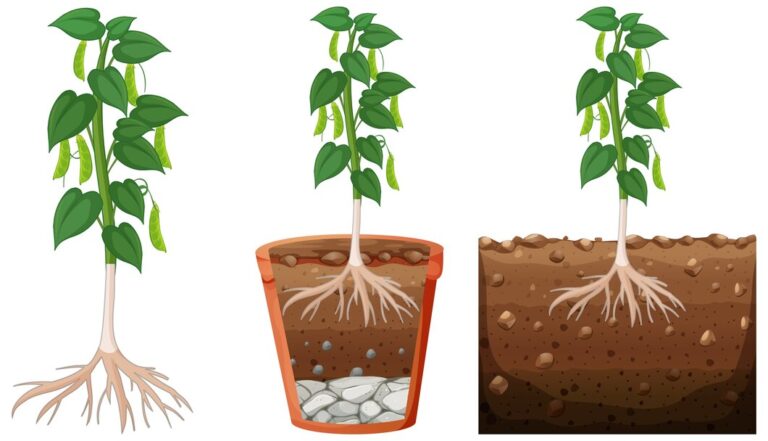How to Choose Between Aquaponics and Hydroponics for Your Soilless Garden
Are you torn between aquaponics and hydroponics for your soilless garden? Well, you’re not alone in this green dilemma. With both methods offering bountiful yields and eco-friendly solutions, it can be tough to decide which route to take. But fear not, fellow gardeners! In this comprehensive guide, we’ll dive into the world of aquaponics and hydroponics, exploring their differences, benefits, and potential challenges.
From nutrient cycles to water usage, we’ll break down everything you need to know to make an informed decision. So grab your gardening gloves and let’s embark on this soilless adventure together! Whether you’re a seasoned pro or a budding enthusiast, by the end of this blog, you’ll be equipped to choose the perfect system for your flourishing garden. Let’s get growing!
Table of Contents
Evaluating Your Goals: Identifying the Purpose of Your Soilless Garden
Identifying the purpose of your soilless garden is a crucial foundational step in planning your gardening journey. Whether you are a novice or an experienced gardener, clarifying your goals will help you make informed decisions and achieve the desired results.
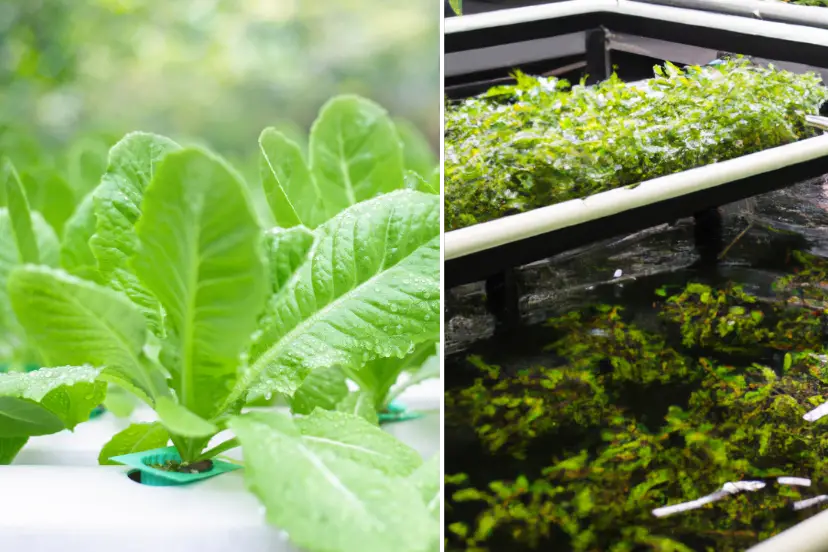
- Personal Consumption: Determine if you aim to grow fresh, healthy produce for personal consumption.
- Income Generation: Consider if you aspire to sell your harvest and create a sustainable income.
- Experimental Endeavors: Assess if you’re interested in experimenting with new and exotic plant varieties.
- Goal Clarity: Clarifying your goals helps in designing a system that aligns with your specific needs and desires.
- Define Your Goals: Consider whether you aim to grow produce for personal consumption, generate income, or experiment with new plant varieties.
- Align with Your Needs: Clarify your goals to design a system that suits your specific requirements and desires.
- Scale and Complexity: Determine the scale and complexity based on your purpose. For home consumption, opt for a simpler setup; for commercial production, invest in a larger, sophisticated system.
- Informed Decisions: Identifying your purpose lays the groundwork for informed decisions regarding design, infrastructure, and overall management of your soilless garden.
Assessing Space and Location: Determining the Suitable Setup for Your Garden
When assessing the space and location for your soilless garden, it is important to consider several key factors.
- Space Evaluation: Begin by identifying available areas like backyard, balcony, rooftop, or indoor spaces. Measure dimensions and note any potential obstacles or limitations.
- Environmental Conditions: Evaluate factors like temperature, humidity, and sunlight exposure. Choose a location that meets the specific requirements of the plants you intend to grow.
- Consider Accessibility: Ensure the location is easily accessible for maintenance tasks such as watering, fertilizing, and harvesting.
- Maximize Growth Potential: By carefully analyzing space and location, you can determine the best setup to optimize plant growth and productivity.
Whether it is a small backyard or a dedicated indoor space, proper planning and assessment will enable you to create an optimal environment for your soilless garden.
Analyzing Cost and Budget: Considering the Financial Implications of Each Method
As you consider implementing a soilless gardening method, it is essential to analyze the cost and budget associated with each method. Both aquaponics and hydroponics offer unique benefits and challenges, and understanding the financial implications can help you make an informed decision.
- Initial Setup Costs:
- Aquaponics: Higher initial setup costs due to the need for fish tanks, filtration systems, and other equipment to create a symbiotic relationship between plants and aquatic animals.
- Hydroponic: Lower initial setup costs since they eliminate the need for raising fish and maintaining an aquatic ecosystem, primarily involving the nutrient solution delivery system, growing medium, and basic environmental control.
- Ongoing Operational Costs:
- Aquaponics: Lower ongoing operational costs due to the natural supply of nutrients from fish waste, which reduces the need for frequent nutrient replenishment. However, there are additional costs associated with fish feed and equipment maintenance.
- Hydroponics: Higher ongoing operational costs due to the need for regular nutrient solution replenishment and monitoring to prevent plant deficiencies or toxicities.
- Additional Income Streams:
- Aquaponics: The potential for an additional source of income through the sale of fish or other aquatic species, which can offset some of the initial costs and contribute to a more sustainable financial outlook.
- Hydroponics: No additional income streams from selling aquatic animals, but the focus on maximizing crop yields with precise nutrient contro.
- Budget and Resource Considerations:
- Aquaponics: Requires careful budgeting and resource allocation to manage the costs of fish feed, equipment maintenance, and other expenses.
- Hydroponics: Primarily involves setting up the hydroponic system and ongoing expenses for nutrient solutions, pumps, and other equipment.
- Location and Space Considerations:
- Aquaponics: May require more space and specific environmental conditions for fish health, which can impact the overall cost and feasibility of the system.
- Hydroponics: Can be adapted to various indoor and outdoor spaces, making it more flexible in terms of location and space requirements.
- Conclusion:
- Aquaponics: Offers a sustainable ecosystem and potential additional income streams, but requires careful budgeting and resource allocation to manage the costs associated with fish feed and equipment maintenance.
- Hydroponics: Provides precise nutrient control and lower initial setup costs, but ongoing operational costs may be higher due to the need for regular nutrient replenishment.
By considering both the upfront investment and ongoing expenses, growers can determine which soilless gardening method aligns with their financial goals and limitations.
Examining Water Usage: Comparing the Water Efficiency of Aquaponics and Hydroponics
Water efficiency is a crucial consideration when comparing aquaponics and hydroponics as soilless gardening methods. Both systems have the potential to significantly reduce water usage compared to traditional soil-based growing. However, there are some distinct differences in water efficiency between the two methods.
- Aquaponics utilizes fish waste as a nutrient source for plants in a closed-loop system, allowing for the recycling and reuse of water, making it highly efficient.
- According to a study published in Environmental Science and Pollution Research, aquaponics systems can use up to 90% less water than traditional soil-based agriculture.
- Hydroponics requires less water compared to aquaponics because the water used can be recirculated, reducing overall water consumption.
- A study conducted by researchers at the University of Arizona found that hydroponics systems can save up to 80% of water compared to conventional farming methods.
- Both aquaponics and hydroponics offer significant water-saving benefits compared to traditional soil-based agriculture.
- Aquaponics stands out for its closed-loop system, where water is continuously recycled and reused, resulting in minimal water wastage.
- Hydroponics, while still highly efficient, requires less water overall due to the recirculation of the nutrient-rich water solution.
Consider your specific needs and resources when evaluating the water efficiency of each method for your soilless garden.
The table below tells about the water usage of both Aquaponics and Hydroponics
| Aspect | Aquaponics | Hydroponics |
| Water Recycling | Highly efficient as water is recirculated through the system, with fish waste providing nutrients for plants. | Efficient, but may require more frequent replenishment as water is not enriched by fish waste. |
| Water Consumption | Generally lower compared to traditional soil-based farming, as water loss through evaporation and soil absorption is minimal. | Moderate to high, depending on the system and climate, with a potential for water evaporation and nutrient leaching. |
| Nutrient Uptake | Nutrients are sourced from fish waste, promoting a symbiotic relationship. Nutrient-rich water is continuously utilized by plants. | Nutrient solution is provided directly to plants, with some potential for unused nutrients to be discarded, requiring replenishment. |
| Drought Resistance | Increased resilience as the system conserves water, making aquaponics potentially more drought-resistant. | Relies on a consistent and adequate water supply; may not exhibit the same drought resistance as aquaponics. |
| Water Monitoring | Regular monitoring is crucial for maintaining optimal conditions for both fish and plants. | Monitoring is essential to ensure nutrient levels in the hydroponic solution remain balanced. |
| Environmental Impact | Generally considered environmentally friendly, as water usage is minimized, and the system promotes resource efficiency. | Can be efficient but may have a higher water demand compared to aquaponics; nutrient runoff may affect local ecosystems. |
Review for Guide to Aquaponics and Hydroponics
As an aspiring urban gardener, delving into the realms of aquaponics and hydroponics felt daunting. However, “Aquaponics and Hydroponics Blueprint” became my beacon of knowledge and inspiration on this green journey.
The book’s comprehensive approach catered to both my beginner’s curiosity and my desire for advanced insights. From understanding the symbiotic relationship between fish and plants to mastering the art of nutrient balance in hydroponic systems, every chapter was a revelation.
What sets this guide apart is its practicality. The step-by-step blueprints and troubleshooting tips were invaluable as I set up my own systems. I found myself referring back to the book frequently, especially during the initial stages when doubts and challenges arose.
While the technical aspects were thorough, I wished for more visuals to complement the text, especially for complex concepts. Nonetheless, the author’s clear explanations mitigated this limitation to a large extent.
In summary, “Aquaponics and Hydroponics Blueprint” isn’t just a book; it’s a transformative tool for anyone passionate about sustainable gardening. It’s a testament to innovation, inspiring readers to harness the power of aquaponics and hydroponics for a greener tomorrow.
- Comprehensive Guide: Offers detailed insights into both aquaponics and hydroponics, catering to beginners and advanced practitioners alike.
- Practical Applications: Provides actionable blueprints and strategies for setting up sustainable aquaponic and hydroponic systems.
- Educational Content: Equips readers with knowledge on plant nutrition, water management, and ecosystem balance.
- Troubleshooting Tips: Includes troubleshooting advice to address common challenges and optimize system performance.
- Inspirational: Inspires readers to embrace innovative gardening techniques for eco-friendly food production.
- Complexity: Some sections may be overwhelming for beginners due to the technical nature of aquaponic and hydroponic systems.
- Limited Visuals: Could benefit from more illustrations or diagrams to aid understanding of complex concepts.
- Narrow Focus: May not delve deeply into advanced topics, leaving experienced practitioners wanting more in-depth information.
Considering Nutrient Management: Addressing Nutrient Delivery Systems in Both Methods
Nutrient management is a crucial aspect to consider when comparing aquaponics and hydroponics. Both methods rely on delivering essential nutrients to plants in the absence of soil, but they employ different systems to achieve this goal.
Hydroponics: Nutrients are delivered directly to plants through a precisely formulated nutrient solution.
Aquaponics: Fish waste provides nutrients, which are broken down by beneficial bacteria and absorbed by plants.
Hydroponics: Requires external nutrient inputs and energy for circulation.
Aquaponics: Utilizes a closed-loop system with fish providing natural nutrients, promoting sustainability.
Hydroponics: Offers precise control over nutrient composition and delivery.
Aquaponics: Relies on natural processes, with less control over nutrient ratios.
Hydroponics: Typically uses synthetic nutrients.
Aquaponics: Embraces organic principles by utilizing fish waste and natural cycles.
Hydroponics: Ideal for tailoring nutrient solutions to specific plant varieties.
Aquaponics: Well-suited for a variety of crops but may have limitations on certain plants.
Hydroponics: Requires separate water purification systems.
Aquaponics: Plants naturally filter water, benefiting both fish and plants.
The choice between these methods ultimately depends on your goals, preferences, and the specific requirements of your crops.
Weighing Maintenance Requirements: Evaluating the Effort and Time Required for Upkeep
Maintenance requirements are a crucial aspect to consider when weighing the options between aquaponics and hydroponics. Both systems require regular monitoring and attention to ensure optimal growth and success of your garden.
Aquaponics Maintenance:
- Water Quality Monitoring: Regularly check pH, ammonia, nitrite, and nitrate levels using test kits or automated systems.
- Balance Nutrients: Ensure a balance between fish waste and plant nutrient absorption to maintain ecosystem health.
- Fish Care: Feed and care for fish consistently to keep them healthy.
- System Cleanliness: Remove debris and excess organic matter to maintain a clean environment.
- Consistent Monitoring: Regular oversight is essential to ensure the health of both aquatic and plant life.
Hydroponics Maintenance:
- Nutrient Solution Management: Monitor and adjust nutrient solution for proper element concentrations.
- Check EC and pH: Regularly measure electrical conductivity (EC) and pH levels to maintain optimal nutrient balance.
- Root Oxygenation: Ensure adequate aeration and circulation in the root zone for healthy plant growth.
- System Cleanliness: Regularly clean the system and check for clogs or blockages in water delivery.
- Preventative Care: Stay vigilant with maintenance tasks to optimize plant growth and system performance.
Considering these maintenance requirements is vital when choosing between aquaponics and hydroponics. Next, we will delve further into the factors to consider when selecting the suitable method for your soilless garden, such as crop selection and environmental impact.
Review for Humboldts Secret Liquid Hydroponics Fertilizer
As an avid hydroponic gardener, I’ve experimented with various nutrient solutions, but none have quite matched the performance of Humboldts Secret Liquid Hydroponics Fertilizer. From the moment I started using this product, I noticed a significant difference in the health and vitality of my plants.
One of the standout features of this fertilizer is its exceptional nutrient formulation. It contains a balanced blend of essential elements, carefully tailored to meet the specific needs of hydroponically grown plants. Whether it’s promoting lush foliage or encouraging robust flowering, this fertilizer delivers the goods.
Another aspect that impressed me was its versatility. Whether I’m using a DWC system, aeroponics setup, or NFT system, this fertilizer adapts seamlessly to various hydroponic applications. This versatility not only simplifies my nutrient management but also ensures consistent results across different growing environments.
Ease of use is another highlight of this product. The liquid formulation makes it incredibly convenient to administer, eliminating the need for messy powders or complicated mixing procedures. With just a few simple measurements, I can provide my plants with the precise nutrients they need for optimal growth.
Since incorporating Humboldts Secret into my hydroponic setup, I’ve witnessed remarkable improvements in plant development. From stronger root systems to bountiful harvests, the results speak for themselves. My plants are healthier, more vibrant, and consistently outperforming previous crops.
Of course, no product is without its drawbacks. The main downside I’ve encountered is the relatively high cost compared to other hydroponic fertilizers on the market. While the performance justifies the investment for serious growers like myself, it may pose a challenge for those on a tight budget.
In conclusion, Humboldts Secret Liquid Hydroponics Fertilizer has become an indispensable part of my hydroponic gardening routine. Its exceptional nutrient formulation, versatility, and ease of use make it a standout choice for growers looking to maximize their yields and cultivate thriving plants.
Whether you’re a seasoned hydroponic enthusiast or just starting out, I highly recommend giving this fertilizer a try. Your plants will thank you for it!
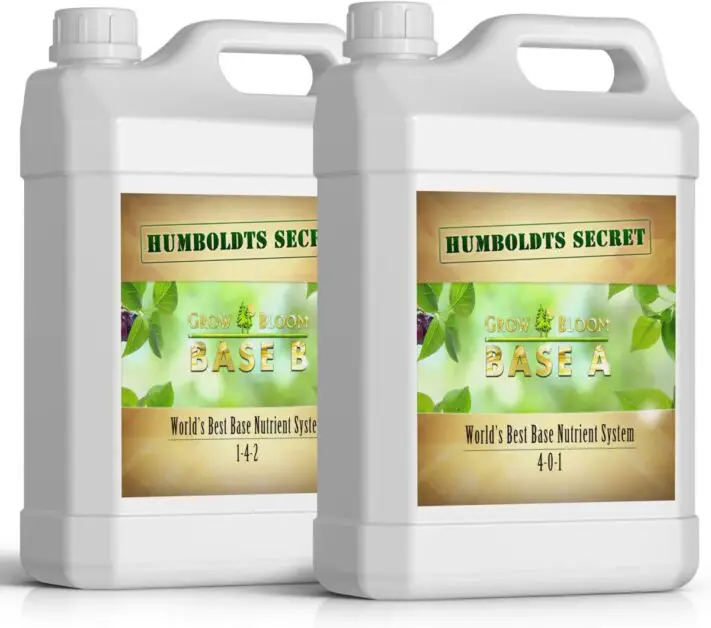
✅ Versatile application: Suitable for various hydroponic systems, including DWC, aeroponics, and NFT, offering flexibility to hydroponic gardeners.
✅ Easy to use: The liquid formula simplifies nutrient management, allowing for hassle-free feeding and precise dosing.
✅ Enhanced plant development: Promotes vigorous vegetative growth, robust root development, and prolific flowering, resulting in higher yields.
✅ Improved nutrient uptake: Formulated with high-quality ingredients that facilitate efficient nutrient absorption, leading to healthier, more resilient plants.
❌ Limited availability: Availability may vary depending on location, making it challenging for some growers to procure the product easily.
Factoring in Crop Selection: Identifying the Plants That Thrive in Each System
When selecting crops for your soilless garden, it is essential to consider the specific requirements of each system. Hydroponics and aquaponics have different nutrient delivery systems and pH levels, which can influence the types of plants that thrive in each setup.
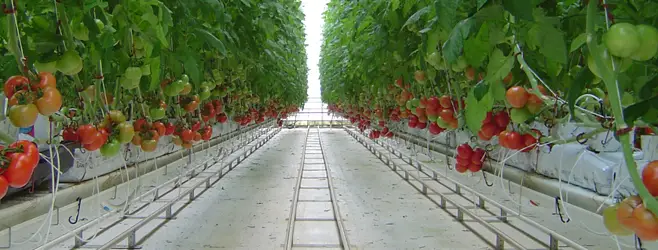
Hydroponics:
- Leafy Greens: Lettuce, spinach, and kale thrive in nutrient-rich solutions.
- Herbs: Basil, cilantro, and parsley adapt well to the controlled environment.
- Fast-Growing Vegetables: Tomatoes and peppers excel due to their high nutrient demands.
- Root Vegetables: Radishes and carrots grow well, as they don’t need deep soil.
Aquaponics:
- Leafy Greens: Kale, Swiss chard, and watercress thrive in nutrient-rich water.
- Fruiting Plants: Peppers, strawberries, and cucumbers do well, tolerating the slightly acidic pH levels from fish waste.
- Symbiotic Relationship: The integration with fish cultivation provides a balanced nutrient environment for plant growth.
Assessing Environmental Impact: Understanding the Sustainability of Aquaponics and Hydroponics
Aquaponics and hydroponics are innovative methods of growing plants without soil, but assessing their environmental impact is crucial in determining their sustainability. Both systems have advantages and disadvantages when it comes to their ecological footprint.
| Aspect | Aquaponics | Hydroponics |
|---|---|---|
| Nutrient Source | Fish waste provides nutrients for plants. Beneficial bacteria convert fish waste into usable forms. | Synthetic nutrient solutions are directly delivered to plants. |
| Sustainability | Highly sustainable due to closed-loop system. Minimizes synthetic fertilizer use. | Depends on energy source. Traditional hydroponics may have higher environmental impact. |
| Water Usage | Requires significantly less water compared to soil-based gardening. | Varies; can be efficient if recirculating systems are used. |
| Control Over Nutrients | Limited control; relies on natural processes. | Precise control over nutrient composition and delivery. |
| Risk of Soil-Borne Diseases | Minimal risk; no soil involved. | Eliminates soil-related diseases. |
| Environmental Impact | Low impact; reduces chemical runoff. | Depends on energy source; can be high if powered by non-renewable energy. |
When considering the sustainability of aquaponics and hydroponics, it is important to take into account factors such as energy usage, waste management, and the potential for resource depletion. By assessing these environmental aspects, gardeners and enthusiasts can make informed decisions about which method aligns with their values and contributes to a more sustainable future.
Addressing Pest and Disease Management: Considering Prevention and Treatment Methods
When it comes to soilless gardening, pest and disease management is a crucial aspect that cannot be overlooked. In both hydroponics and aquaponics systems, preventing and treating pests and diseases require a proactive approach to ensure the health and productivity of your plants.

Prevention:
- Sanitation Practices: Keep your garden clean and sterile to prevent pest and disease spread.
- Regular Inspections: Routinely check plants for signs of infestation or disease.
- Good Hygiene: Wash hands and tools before working in the garden to minimize pathogen introduction.
Treatment Methods:
- Integrated Pest Management (IPM): Use biological controls like beneficial insects or nematodes to reduce pest populations without heavy pesticide reliance.
- Chemical Intervention: If necessary, select products labeled for soilless systems and follow instructions carefully to avoid harming beneficial organisms.
By considering prevention and treatment methods in pest and disease management, you can ensure the longevity and success of your soilless garden. Next, let’s delve into the educational opportunities that both aquaponics and hydroponics offer, and how they can enrich your knowledge and skills in gardening.
Exploring Educational Opportunities: Recognizing the Learning Potential of Both Methods
Exploring the realm of educational opportunities, both aquaponics and hydroponics offer unique learning potential for gardening enthusiasts. In aquaponics, the symbiotic relationship between fish and plants creates a fascinating ecosystem that can be observed and studied.
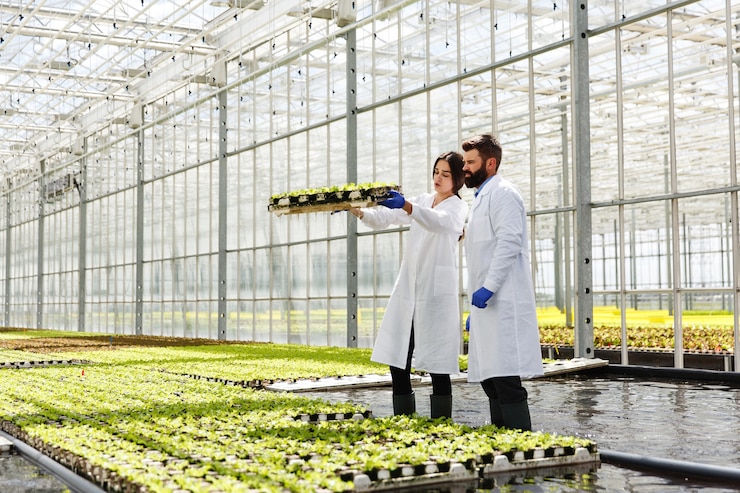
Exploration of Aquaculture:
- Sustainable Fish Farming: Learn principles of aquaculture and sustainable practices.
- Hands-On Experience: Nurture fish and understand their biology and ecosystem.
Deep Dive into Plant Biology:
- Nutrient Management: Experiment with nutrient solutions and optimize plant growth.
- Understanding Nutrient Requirements: Discover specific nutrient needs of various plants.
Scientific Inquiry:
- Controlled Environment: Ideal setting for experiments on photosynthesis, pH levels, water chemistry, and ecological balance.
- Observation and Analysis: Track growth patterns and compare results to learn scientific concepts.
Practical Skill Development:
- Problem-Solving: Address issues like nutrient deficiencies, pH imbalances, and pest infestations.
- Time Management: Develop efficient practices to maintain the system.
- Resource Utilization: Learn to use resources effectively to optimize garden health.
Critical Thinking and Adaptability:
- Keen Observation: Cultivate skills to identify and solve problems in the system.
- Troubleshooting: Acquire abilities to adapt and overcome challenges in gardening and other areas of life.
Overall Educational Potential:
- Interdisciplinary Learning: Engage in diverse scientific disciplines through active participation.
- Practical Applications: Gain valuable skills for personal and professional development.
- Curiosity and Discovery: Foster a sense of curiosity, making learning engaging and rewarding.
By embracing these educational opportunities, gardeners can nurture not only their plants and fish but also their own understanding and appreciation of the natural world.
Seeking Expert Advice: Consulting Professionals for Personalized Guidance
When it comes to starting a soilless garden, seeking expert advice is crucial for personalized guidance. Consulting professionals in the field of hydroponics and aquaponics can provide valuable insights and recommendations tailored to your specific goals and needs. These experts possess in-depth knowledge and experience in the field, enabling them to offer advice on various aspects of your garden setup.
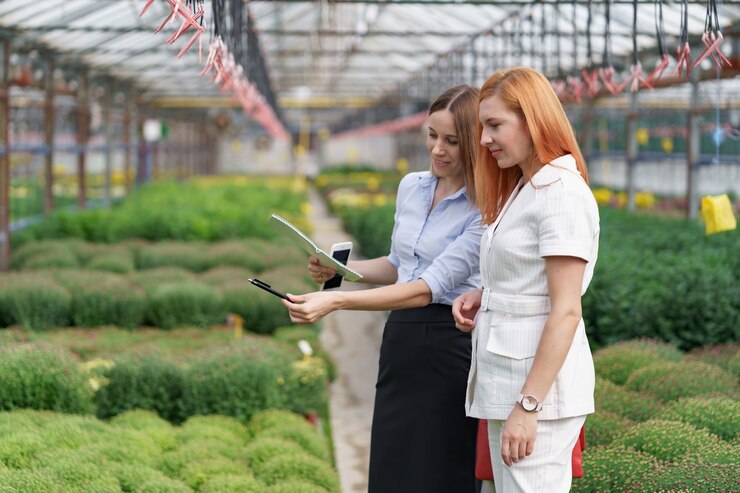
- System Selection:
- Professionals help choose the right system based on space, budget, and crop preferences.
- Ensure alignment with your gardening goals.
- Nutrient Management:
- Experts provide information on nutrient delivery systems.
- Assist in making informed decisions about nutrient composition.
- Maintenance Guidance:
- Understand effort and time required for upkeep.
- Learn pest and disease management strategies.
- Educational Opportunities:
- Workshops and resources enhance understanding of soilless gardening.
- Experts offer personalized advice to avoid common pitfalls.
Remember that professional guidance can lead to a successful soilless garden! So, before setting up your soilless garden, consider reaching out to these experts for the valuable guidance they can provide.🌱🌿🐟
By carefully considering these factors, you can confidently
By carefully considering these factors, you can confidently make informed decisions regarding the setup and management of your soilless garden.
- Define Your Goals and Purpose:
- Consider what you want to achieve with your garden. Are you growing food, ornamental plants, or medicinal herbs? Clarify your objectives to guide your method selection.
- Crop Selection:
- Different soilless systems are better suited for specific crops. Research which method aligns with the plants you intend to grow.
- Water Efficiency:
- Aquaponics recirculates water between fish and plants, while hydroponics uses a nutrient solution. Evaluate which system conserves water more effectively.
- Environmental Impact:
- Both methods reduce soil use, but consider other environmental factors. For example, aquaponics requires fish care, while hydroponics relies on synthetic nutrients.
- Space and Location:
- Assess available space. Hydroponics can be set up indoors or outdoors, while aquaponics may need more room due to fish tanks and grow beds.
- Sunlight Exposure:
- Determine if your location provides sufficient natural light. If not, consider supplemental artificial lighting for indoor setups.
- Access to Electricity and Water Sources:
- Ensure you have access to electricity for pumps, lights, and other equipment. Also, consider water availability and quality.
- Cost and Budget:
- Evaluate the initial investment and ongoing costs for equipment, seeds, and maintenance. Choose a system that fits your budget.
- Nutrient Management:
- Hydroponics requires precise nutrient solutions, while aquaponics relies on fish waste. Understand nutrient requirements for your chosen method.
- Maintenance Requirements:
- Regular monitoring and adjustments are necessary. Factor in time for tasks like pH balancing, water level checks, and fish care (for aquaponics).
- Pest and Disease Management:
- Soilless systems are not immune to pests and diseases. Learn preventive measures and treatment options.
- Educational Opportunities:
- Soilless gardening offers continuous learning. Explore resources, attend workshops, and connect with other enthusiasts.
- Seek Expert Advice:
- Consult experienced gardeners, join online forums, and learn from their insights.
Remember, your soilless garden’s success depends on thoughtful planning, consistent care, and a willingness to adapt as needed.
Learn more about How to Choose Between Aquaponics and Hydroponics in below video:
FAQ
What is the main purpose of a soilless garden?
The main purpose of a soilless garden is to provide a controlled environment for growing plants without the use of traditional soil. This allows for better control over nutrient delivery, water usage, and pest management.
What factors should I consider when evaluating my goals for a soilless garden?
When evaluating your goals for a soilless garden, it is important to consider factors such as the type of plants you want to grow, the quantity of produce desired, and the level of sustainability you want to achieve.
How do I determine the suitable setup for my soilless garden in terms of space and location?
To determine the suitable setup for your soilless garden, consider the available space you have, whether it is indoors or outdoors, and the amount of sunlight or artificial lighting the plants will need. Additionally, assess the accessibility of water sources and the potential for expansion in the future.
What are the financial implications of aquaponics and hydroponics?
The cost and budget for aquaponics and hydroponics can vary depending on the scale of the system, equipment needed, and maintenance requirements. It is important to analyze the initial investment, ongoing expenses, and potential returns or savings in terms of produce yield.
How do aquaponics and hydroponics differ in terms of water efficiency?
Aquaponics and hydroponics are both water-efficient methods of gardening. However, aquaponics utilizes a closed-loop system where water is continuously recycled and reused, making it even more water-efficient compared to hydroponics.
What are nutrient delivery systems in aquaponics and hydroponics?
In aquaponics, the nutrient delivery system relies on fish waste that provides natural nutrients to the plants through water circulation. In hydroponics, nutrient solutions are manually mixed and delivered to the plants through various methods like nutrient film technique or drip irrigation.
What maintenance requirements should I consider for a soilless garden?
Maintenance requirements for a soilless garden can include monitoring nutrient levels, pH balance, and water quality. Regular cleaning and inspection of equipment, as well as pest and disease management, are also important aspects of maintaining a healthy soilless garden.
Which plants thrive better in aquaponics and hydroponics systems?
Different plants have different preferences for growing in aquaponics and hydroponics systems. Leafy greens, herbs, and some fruiting plants like tomatoes and cucumbers tend to thrive in both systems, while larger fruiting plants like melons and squash may be more suitable for hydroponics.
How sustainable are aquaponics and hydroponics in terms of their environmental impact?
Both aquaponics and hydroponics have a lower environmental impact compared to traditional soil-based gardening. They reduce water usage, eliminate the need for synthetic pesticides and fertilizers, and minimize soil erosion. Aquaponics, in particular, showcases high sustainability as it uses the waste from fish farming to nourish the plants.
What are the prevention and treatment methods for pests and diseases in soilless gardens?
Prevention methods in soilless gardens include maintaining cleanliness, practicing proper sanitation, and implementing integrated pest management techniques. Treatment methods may involve using organic insecticides or disease control measures specific to each pest or disease.
How can aquaponics and hydroponics be utilized for educational purposes?
Aquaponics and hydroponics provide unique educational opportunities for learning about sustainable agriculture, plant biology, water conservation, and food production. These methods can be implemented in educational institutions to engage students in hands-on learning and raise awareness about alternative farming techniques.
Should I consult professionals for personalized guidance when starting a soilless garden?
Yes, seeking expert advice from professionals who specialize in aquaponics or hydroponics can provide valuable insights and guidance tailored to your specific needs. They can help you design and set up an efficient system, troubleshoot any issues, and provide ongoing support for your soilless garden.

Studied Agricultural Engineering-Plant Protection at University of California, Davis.
Head of Content writing team at Southelmontehydroponics.com


